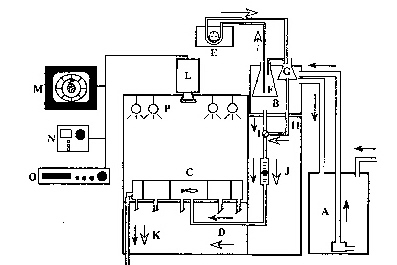Fig. 1. Schematic diagram of the front view of the behavioral monitoring system, with a 200 L reservoir (A). from which charcoal-filtered. dechlorinated water was then pumped into a constant-overflow head box (B) and then flowed into the octagonal fluviarium (C). through one of eight tygon tubes (D) leading to one of eight infusion chambers. The toxicant was delivered to the fluviarium from a 4 L reservoir (F). floating within the constant-overflow head box. from which the toxicant was then pumped (E) into a l L flask (G) also floating within the constantoverflow head box and then flowed into the fluviarium through tygon tubing for the toxicant (H). In the I L flask. the toxicant overflowed through a top oudet and was returned to the 4 L reservoir. Flow valves (1) and flow meters (J) were used to produce a constant flow rate through the entire fluviarium of approximately 1 L/min. Water left the fluviarium through peripheral water outlets (K). A video camera (L). video monitor (M). Videomex V (N). video-cassette recorder (0). and vita-lights and black lights (P) were also used. Solid arrows represent the flow of charcoal-filtered, dechlorinated water, and open arrows represent the flow of the toxicant.
